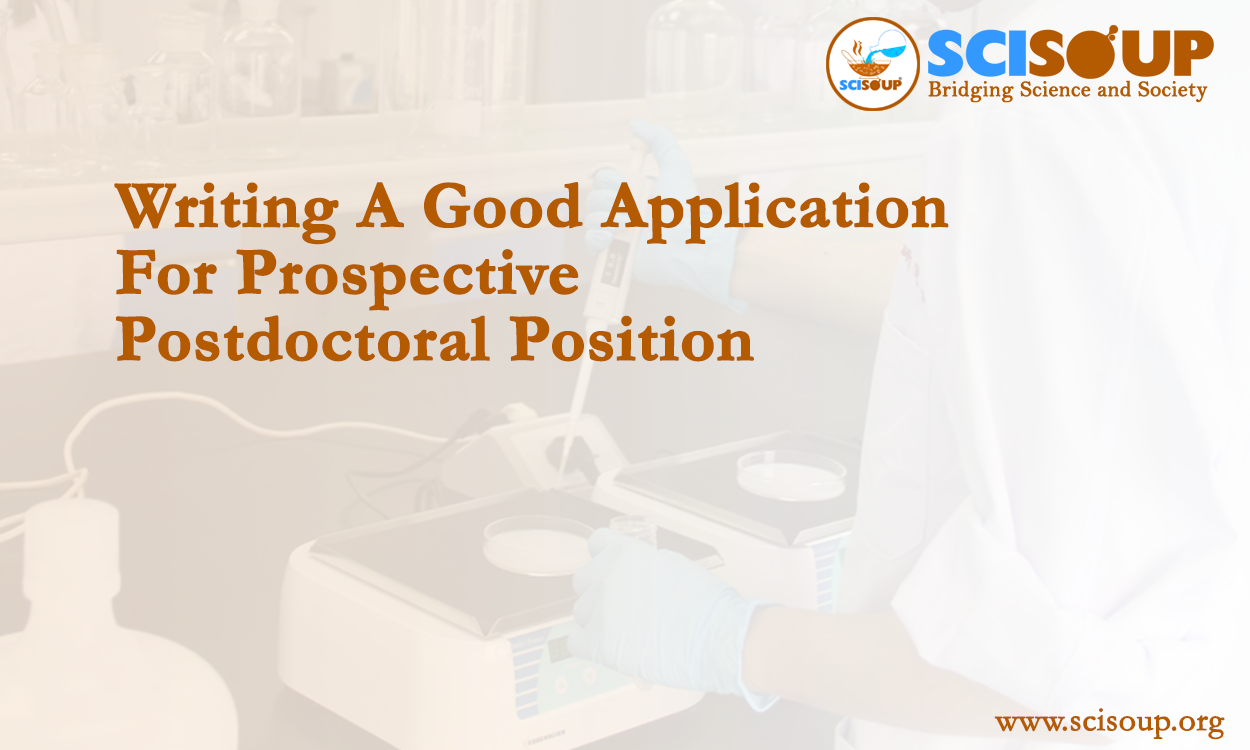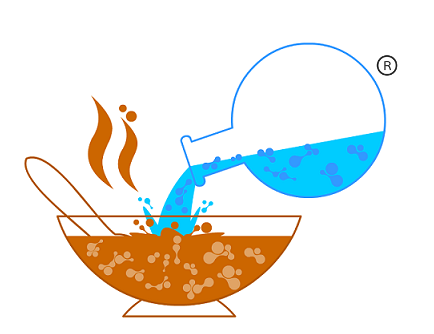
You are nearing the end of your PhD program, and have decided that you want to pursue a postdoc. What next - how does one apply for a postdoc position?
APR 23, 2022 | BY PAYEL GANGULY, RAJESH D. GUNAGE
A postdoc is a temporary position, and it is a highly competitive opportunity to get selected for the mentored training intended to enhance specialized skills in new research areas, managerial abilities and leadership role for research and industry.
Besides a chance to explore new frontiers of science, a postdoctoral experience gives you another opportunity to understand yourself better, identify and work on your strengths and weaknesses, work towards building your CV, make meaningful connections, plan for the long-term future, and chart out a desired career trajectory. Therefore, choosing where to do your postdoc is an important decision, and writing a good application for the prospective postdoc position will help you seize the opportunity.
Applying for a postdoc is more than just drafting an e-mail because honestly, PIs receive many such e-mails weekly, and you have the unenviable task of making yours stands out. The authors of this article have graduated from different institutions, and using their overlapping experience, they’ve put together a useful guide for the application process.
Once you have shortlisted the laboratories you would like to apply to, go through the following steps for each of them. You must tailor your application to the specific lab you are applying to; the worst thing you can do is to use a generic template for the multiple labs you’ll be applying to. Finding a good workplace and colleagues takes time and the authors cannot overstate the importance of taking your time to decide which offer to accept. Hastily accepting the first option that comes along your way is considered unwise.
1. Email- You will write to your future mentor to inquire about the availability of a potential postdoc position in their research group. A well-written crisp email introducing yourself, your research, conveying why their research and workplace excites you, and then closing with a thanking remark serves as a good starting point. A few lines about a possible new research idea based on their recent work can also be added but it is not a prerequisite. Usually, this email should not be more than 4-5 paragraphs long and doesn’t extend beyond one page. Make sure the email is not too verbose and has the appropriate amount of interesting information. You must remember that a professor receives several such emails in the day so make sure your email is unique and honest. Your CV is attached at the end of this email.
2. Curriculum Vitae (CV) - A model CV is meant to convey key information about you and is a non-redundant piece of information that is not conveyed in email. A standard CV has the following sections- Name and email ID, Education- Ph.D. to undergraduate details, Research experience- Ph.D. thesis details in not more than 2 paragraphs with your thesis advisors name and details, other research training experiences, Techniques and skills, Awards, and Fellowships, Publications, Presentations and invited talks, Teaching, other relevant experience, any possible management/job experience, and names and e mail ids of your references. A good CV is only about two to three pages long.
3. Interview - This is probably the most exciting and yet unnerving part of the whole postdoc search expedition. There are simple guidelines to this step. The first step is to prepare a talk that will last 45-50 minutes including the question-answer session. Please make sure that this talk is thoroughly practiced and rehearsed with your Ph.D. mentor and peers. Consider this talk as a slightly shorter version of your PhD thesis seminar. Expect a good interaction and question-answer session with your future co-workers. Also, remember that they might interrupt you while you are presenting to ask questions, so remember not to get perturbed but retain the flow in your talk once you get back to it. Always end your talk showing gratitude for the opportunity to present your work. Don’t forget to acknowledge your previous mentor, collaborators, funding agencies, and lab colleagues.
4. Interaction with future colleagues - We look at this as an excellent opportunity to learn more about the environment of the lab. This is a semi-formal discussion usually scheduled around your interview talk. You are still being interviewed so keep it professional and have a list of questions ready for this interaction. The importance of this engagement is to perceive compatibility between you and the workplace. Questions about fellowships, work-life balance, childcare, lab environment, and mentoring style are some of the common topics. Please ensure transparency during the discussion process and don’t shy away from asking questions just because you perceive it might jeopardize the prospect of you getting the job.
5. Follow up - A job offer email about your selection could take about 7-15 days. Many labs use feedback from lab members to take a democratic decision to hire a new person. Meanwhile, you must send an email after a couple of days post-interview, summarizing your experience from interaction with colleagues and if there is anything new you might have learned about their research. This email usually ends with you re-iterating your earnest interest in joining their group and contributing to the research. While being earnest is important, remember that you don’t have to be overly keen because you have a Ph.D., and you will get ample opportunities. It is a little bit about being at the right time at the right place.
6. Getting the offer - Most likely if you do well and if your reference letters are sent, you will be offered the position. An email clearly stating so will arrive in your inbox. If you haven’t received any email within two weeks, an email as a gentle reminder can be sent to the lab manager or the group leader. At this stage, you will be tempted to accept the offer and it is the correct thing to do unless you have other interviews and opportunities in store. It is a common practice to ask for a few weeks to make an informed decision and this is usually conveyed by email asking for the same. Having multiple interviews and offers often helps you choose the best option for your growth. To make sure that you are reaching a well-informed decision it is often recommended that you discuss the offer with your mentor, peers, and other scientists from your community. At the same time don’t forget to trust your instincts too.
The average numbers of postdoc years are 3-6 thus it is important to have a healthy and motivating workplace. Aim high, don’t be shy, and be the best at everything you try.
How to draft an effective email to your prospective postdoctoral mentor?
Subject: Keep your subject simple and to the point. For example: Application for postdoc position or opportunity
Addressing the email: Dear Prof/Dr. X or Respected Dr. X
Body of the email: This is probably the most important aspect of your email. Make sure your email is polite and formal. A note of caution –avoid using superfluous language like – “I read your wonderful paper, or you are the best”. If you really liked the paper, convey that in a language that shows your interests, or, even better, possible follow-up ideas based on that.
a) Introduce yourself – Start with your name, lab, and what stage of Ph.D. you are in. Provide a tentative timeline including thesis submission and when you plan to start at the beginning of the email.
For example: I am Payel, a graduate student in the Allan and O’Connor labs at UBC, Vancouver. I am in the final year of my PhD, hoping to defend by fall of this year. I am writing to inquire regarding the availability of a postdoctoral position in your lab.
b) How did you come across their work or why is their work of interest to you – Be clear in this section. Make sure your interest is evident and sincere. Preparing this part takes some reading. If you have met the PI previously at a conference or elsewhere, bring that up here. If there are specific ongoing projects that interest you, you may mention that here.
For example: I really enjoyed learning and discussing your work while attending the X workshop last month. I find your work at the interface of neurobiology, evolution, and behaviour inspiring, especially the work on CaMKII, its tunable duration of activity in modulating a behaviour and the concept of eruption. I would be thrilled to get an opportunity to discuss the research that is being done in your lab.
c) Introduce your current project – Distill your PhD research into two or three sentences, highlighting your expertise and accomplishments. Make sure you include your publications (peer-reviewed, preprints or manuscripts in preparation) at this point in the email. For example: In my PhD project, using Drosophila, I am testing the function and genetic interactions of missense human PTEN variants, with a focus on ASD and cancer. I have generated ~100 inducible human PTEN fly variants and developed assays to categorize their relative function in developmental timing (Post, Belmadani, Ganguly et al., Nat. Comm., 2020). The other aspect of my work involves functionalization of human PTEN variant activity in tissue growth and cellular proliferation for clinical interpretation (Ganguly et al., submitted).
d) Ending the email – You can take your own course here. If your PhD project and your new research interest are related, make sure you appropriately highlight how you intend to contribute to the lab. If not, no need to worry - acknowledge that your fields don’t overlap and reinforce your interest once again.
For example: While my current project does not specifically overlap with your research interests, I am keen to learn and work with your group. Please find attached my CV in this email. I look forward to hearing from you and discussing if we are a good fit. I also welcome any suggestions you may like to offer. Thank you so much for your time.
Sincerely,
Payel
Payel Ganguly
PhD candidate
Graduate Program in Cell and Developmental Biology
Life Science Centre, University of British Columbia
All the elements in this write-up are a concoction of information gathered from discussing with several candidates who applied and eventually found their dream job.
Author Payel Ganguly (Ph.D) attended graduate school at the University of British Columbia, Vancouver, and is now a postdoctoral fellow at the Van Vactor and Artavanis-Tsakonas laboratory at Harvard Medical School.
Author Rajesh Gunage (Ph.D.) is working as a postdoctoral fellow with the Zon laboratory at Children’s Hospital-Harvard medical school, Boston, USA. Rajesh was a Ph.D. student at NCBS-TIFR, Bengaluru.
Edited By: Neha Nandwani (Ph.D.)- a postdoctoral fellow in the laboratory of James Spudich at Stanford University School of Medicine. Neha obtained her Ph.D. from NCBS-TIFR, Bengaluru.

Send your opinions, questions, and suggestions for future column topics and stories - to scisoup@gmail.com and engage with us on